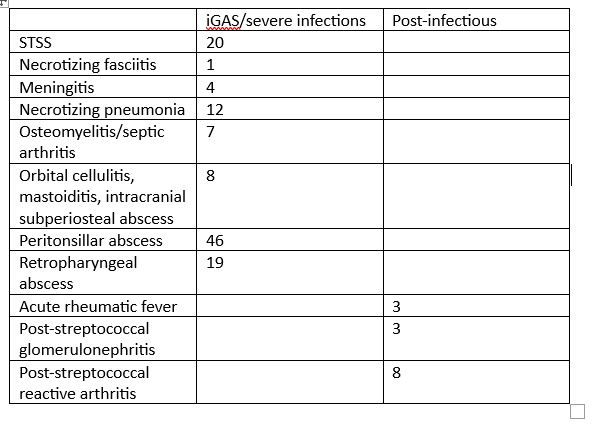Infectious Diseases 2: Bacterial infections
Session: Infectious Diseases 2: Bacterial infections
625 - Group A Streptococcal Infections during 2022-2023 in Central Ohio, Possible Lessons in Testing and Treatment
Friday, April 25, 2025
5:30pm - 7:45pm HST
Publication Number: 625.5326
Randal De Souza, Nationwide Children's Hospital, Columbus, OH, United States; Patrik E. Sarmiento-Wilches, Nationwide Children Hospital, Columbus, OH, United States; Guliz Erdem, Nationwide Children's Hospital, columbus, OH, United States

Randal De Souza, MD (he/him/his)
Pediatric Infectious Diseases Fellow
Nationwide Children's Hospital
Columbus, Ohio, United States
Presenting Author(s)
Background: We treated an increased number of patients with group A streptococcal (GAS) disease between 2022 and 2023. Treatment failures and relapses among streptococcal pharyngitis patients were frequently reported during the same period.
Objective: We analyzed the diagnostic testing results to understand the changes in rates of noninvasive and invasive GAS (iGAS) disease during this period. EMR were reviewed to identify the clinical characteristics of iGAS infections.
Design/Methods: Nationwide Children’s Hospital (NCH) serves to the population of Central Ohio with an estimated 300,000 children under 18. All patients with positive GAS tests and cultures and patients diagnosed with GAS infection were included. The study period was January 1, 2022, through June 30, 2023. We reviewed diagnoses when the GAS test/culture was obtained as well as admission, discharge diagnoses for inpatients. We queried positive influenza tests reported at the same date or within the preceding two weeks.
Results: During the study period, 28,470 positive GAS test results were identified. The majority were pharyngeal swabs identified in fall 2022 and before the surge of observed invasive disease. The estimated rate of iGAS was 14.6 per 100,000 pediatric population (Table 1). 32% of the patients had more than one positive GAS test result within an 8-week period of each other. The preliminary chart reviews showed some tests were done due to lack of treatment response. 13.6% of iGAS patients had preceding or co-infection with influenza. Overall influenza was identified in 3.7% of the patients. The antimicrobial susceptibility results and emm typing were not available in non-invasive infections. Only 10 isolates from iGAS had emm typing done. Of these tested, five belonged to emm 1, two belonged to emm 77, two belonged to emm 12 and one was emm 66.
Conclusion(s): The number of positive tests increased before the surge of iGAS disease suggested existing spread within the community. Increase in iGAS infections were significant. Recurrent positive tests via RSS/PCR may not reflect recurrent infection, however reasons for clinical failures or symptomatic relapses in appropriately treated patients remain unclear bringing the possibility of utilizing throat cultures to appropriately identify recurrent infections and aid in molecular epidemiologic and antimicrobial susceptibility testing.
Table 1. Invasive, severe GAS infections and postinfectious complications
 Table 1. Invasive, severe and postinfectious complications
Table 1. Invasive, severe and postinfectious complications
